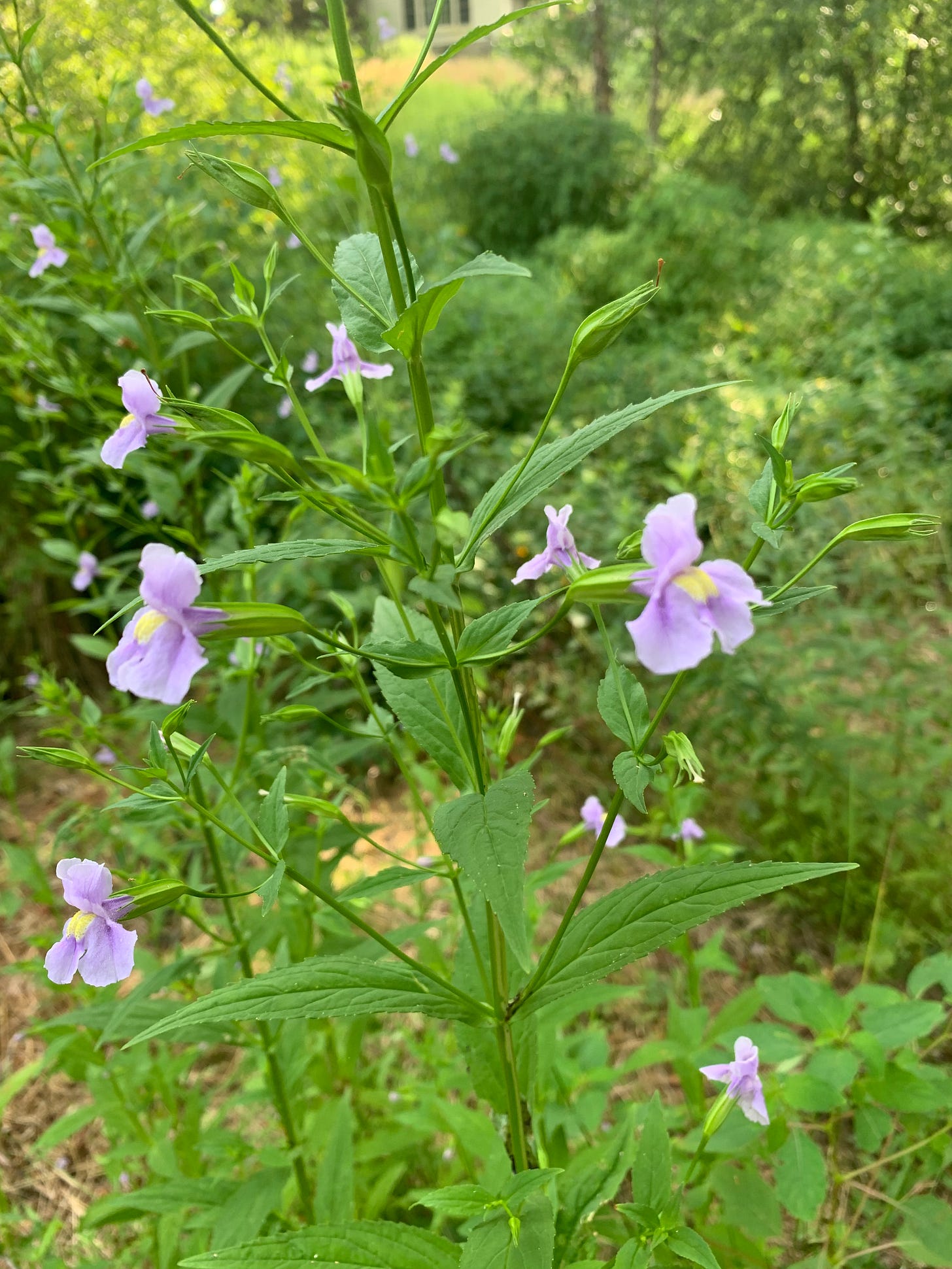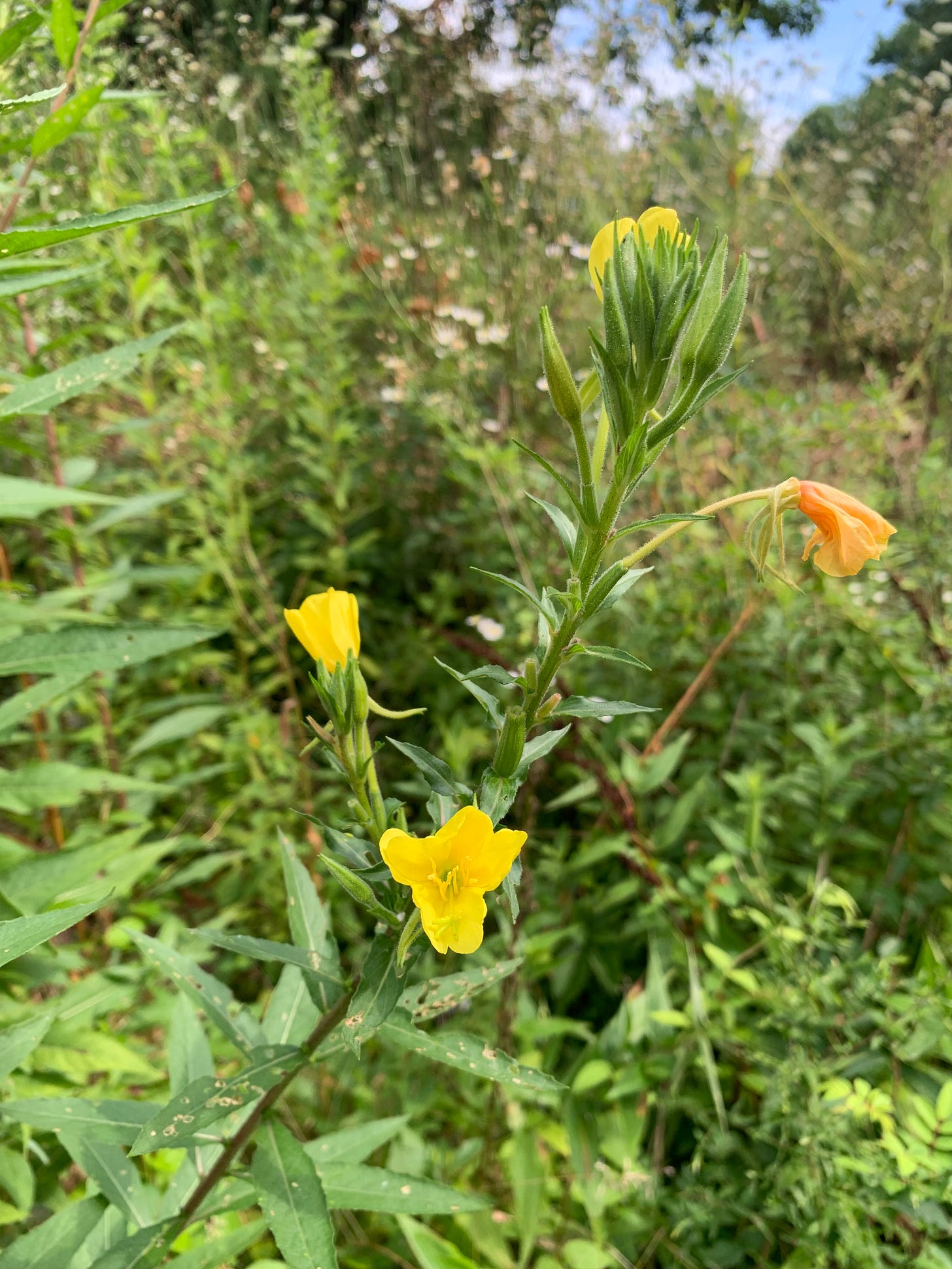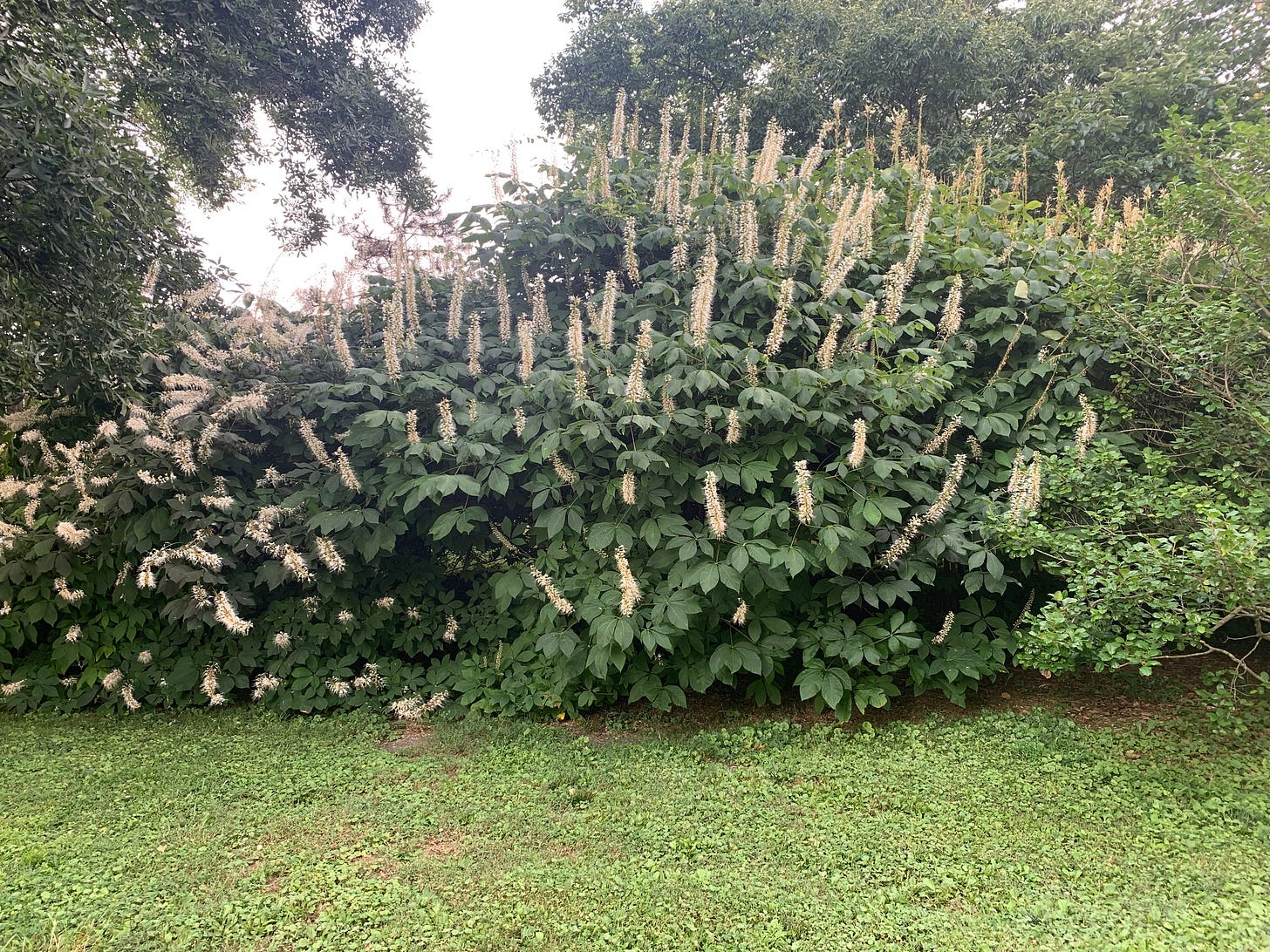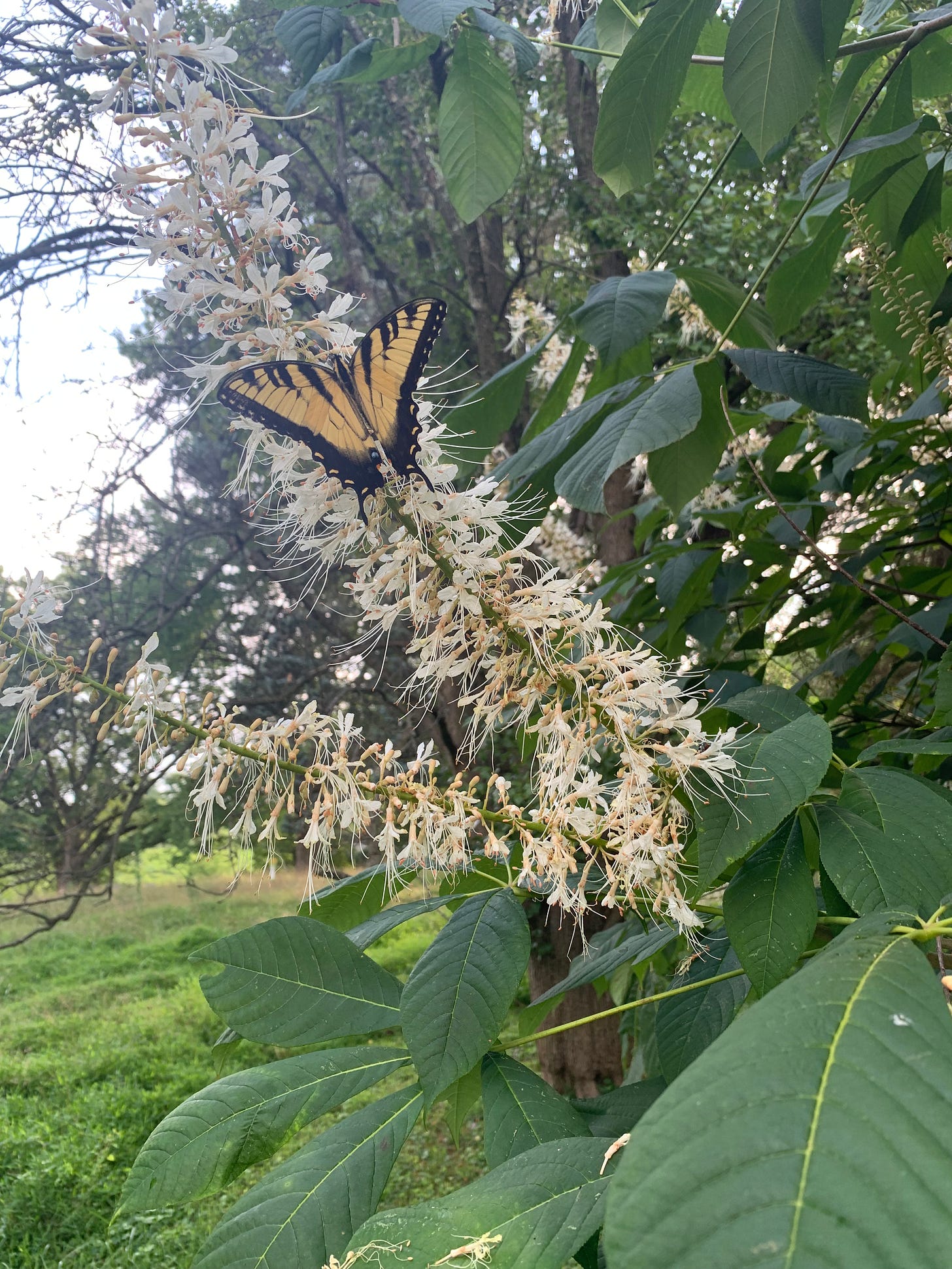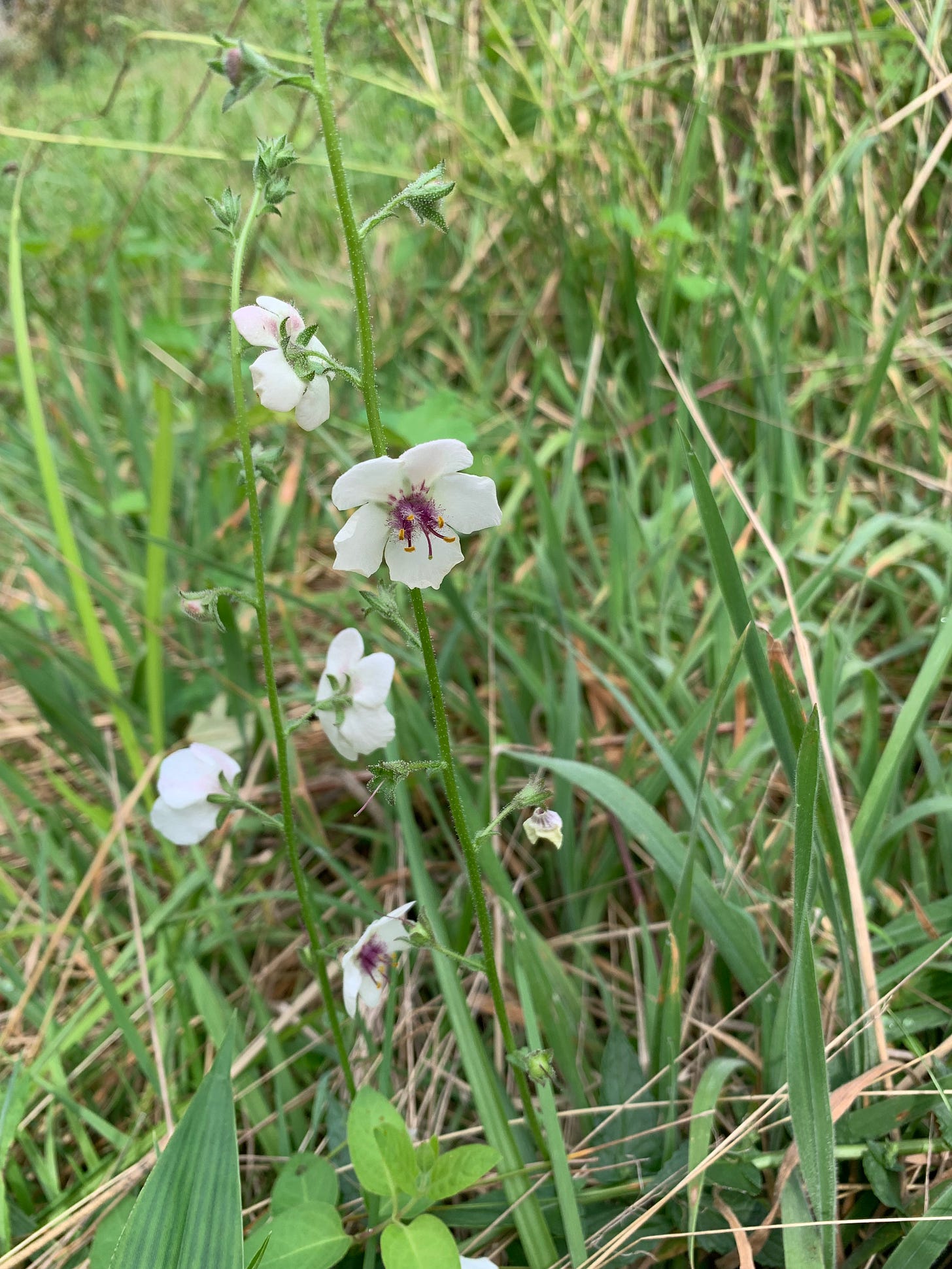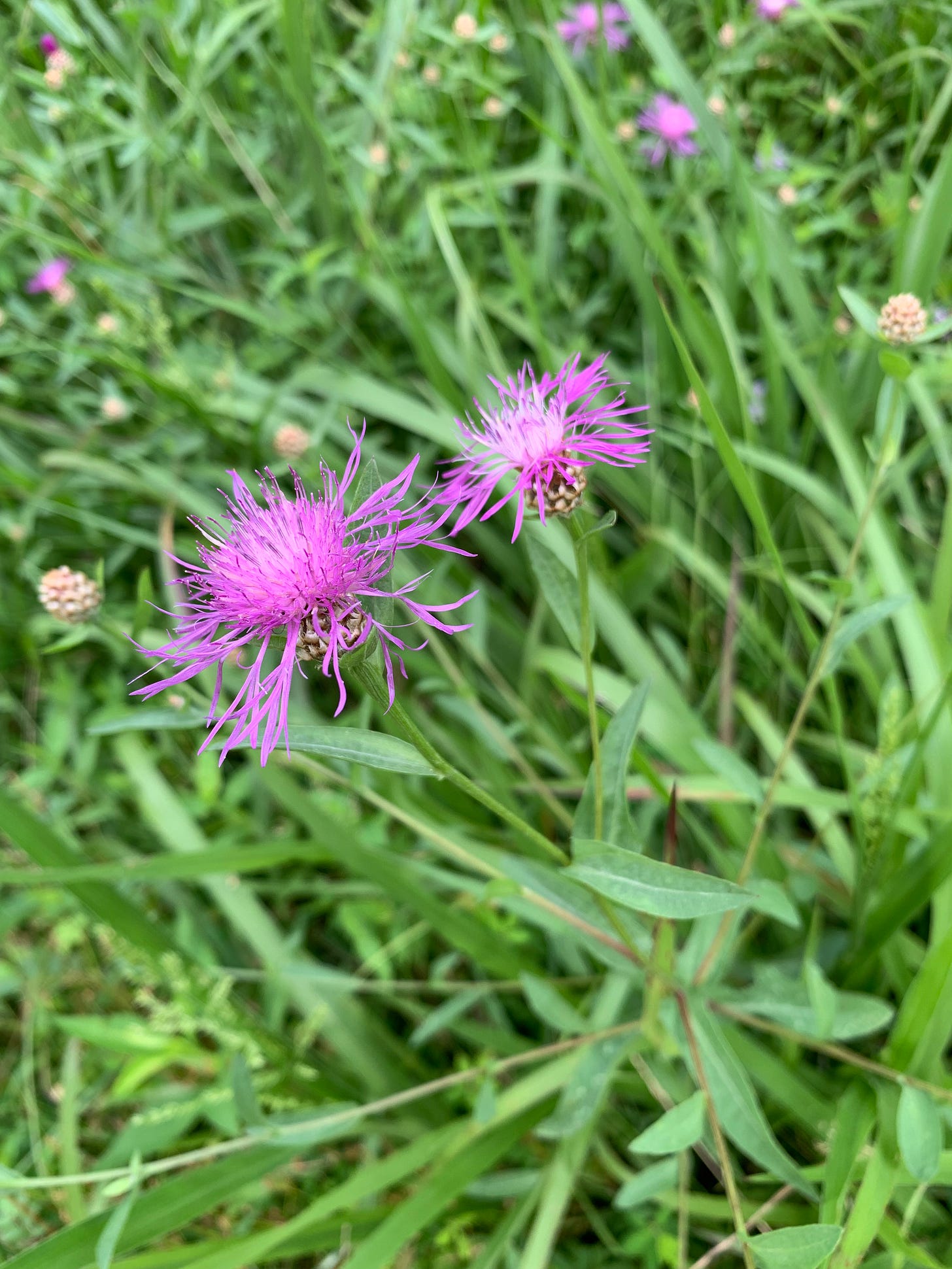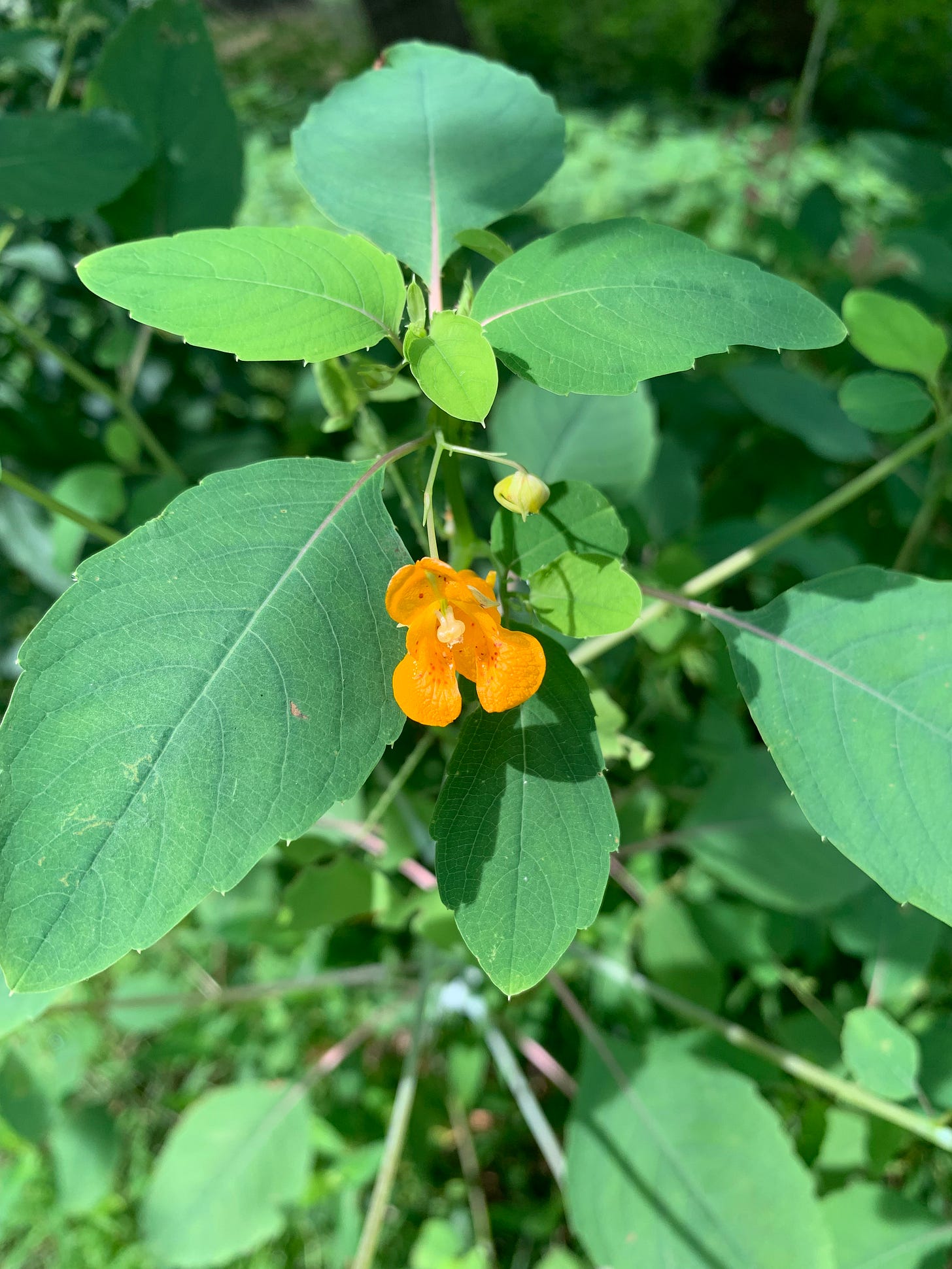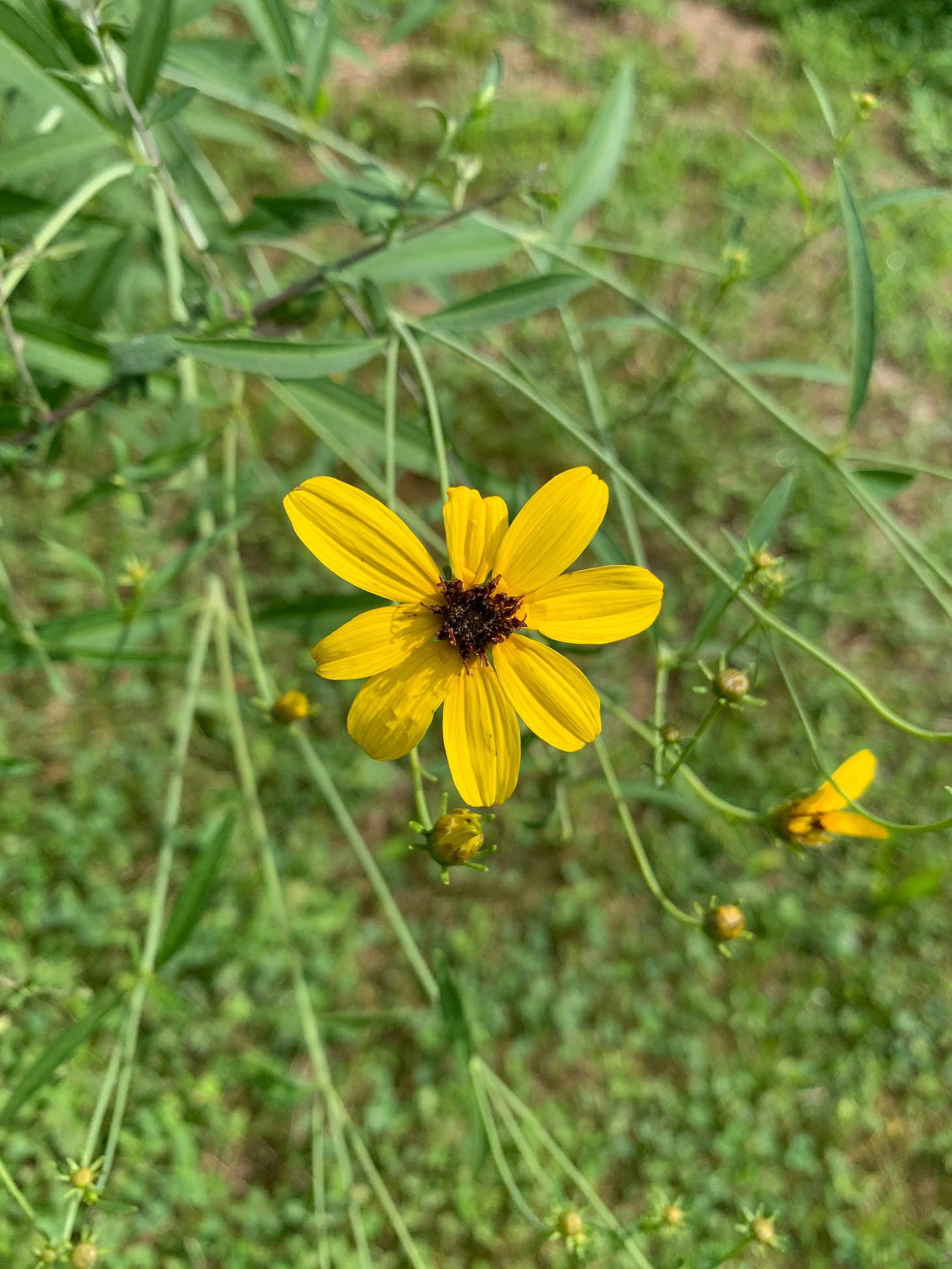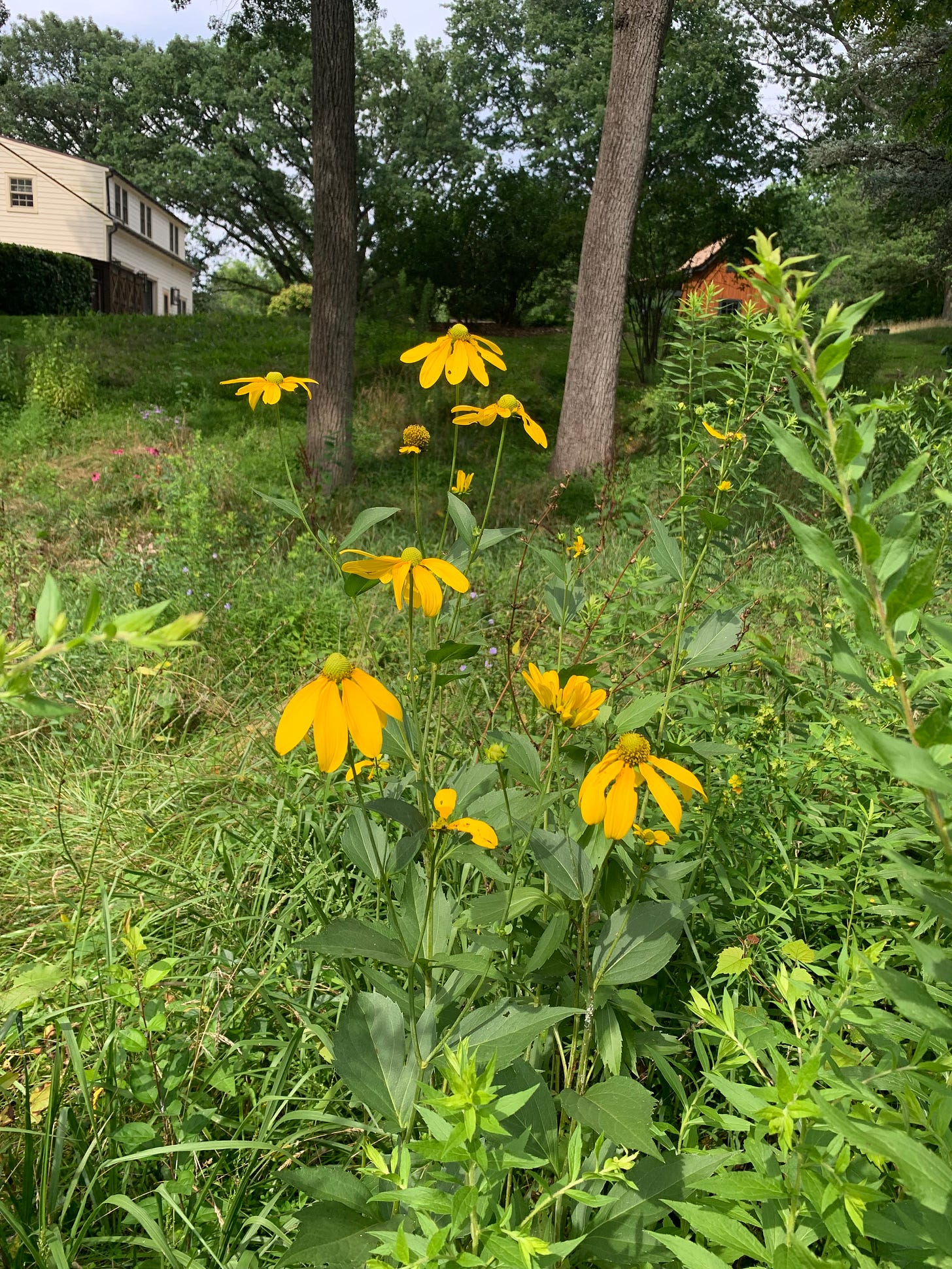Hope Among the Ruins
Puddock Hill Journal #17: An aggressive attack on invasive patches yields mixed results and pretty fine surprises.
This time of year, the war against invasive plants at Puddock Hill takes on ominous overtones. Plants like Multiflora rose that were cut back fight back. Stifling annuals like Japanese stiltgrass begin cropping up everywhere. Yet others, like Smartweed, get bolder and behave more aggressively. Many, like Japanese honeysuckle, attempt to flower as a precursor to setting seed.
Larry, our part-time property manager, got discouraged this week. Just when you start to believe your efforts are yielding results, he noted, you see setbacks at every turn.
You may recall that a few weeks ago I was discouraged myself. As in any war, there will be advances and setbacks, morale boosters and buzz killers. And in this case, we are in some sense fighting the forever war.
Larry’s complaint was prompted by an examination of the big pond dam, where just a few weeks ago we undertook heavy string trimming of invasives while attempting to spare what clumps of natives (such as Tall goldenrod (Solidago altissima)) or benign foreigners (Queen Anne’s lace) we could define. In an area off the barn path, we similarly went after the invasives hard with both mower and string trimmer.
The Porcelainberry fought back strong, in some spots re-carpeting the ground. I’m not gonna lie. This was a major bummer.
Growth is every plant’s full-time job, and fighting the growth of invasives would have to be ours in order to achieve full conquest. I can’t afford the time or money for that complete effort, however. Places like Mt. Cuba Center and Longwood Gardens have dozens of staff walking the property regularly and doing maintenance, yet I even see invasives in their meadows.
What hope do mere mortals on a budget have? Well, as I’m learning, hope can spring forth when you least expect it.
Just when things looked bleakest, in two clumps that survived our string trimming I noticed native flowers in bloom that validate (in my mind, at least) our approach. I’ve never seen Allegheny monkeyflower (Mimulus ringens) at Puddock Hill before. It is the larval host to two native butterflies, the Baltimore checkerspot (Euphydryas phaeton) and the Common buckeye (Junonia coenia). This clump went into bloom in the past week in the wet woods:
If we had completely clearcut that area or regularly mowed it, this Monkeyflower plant would never have had a chance to flower and seed.
Later in the week, while examining the disastrous rebound of Porcelainberry on the big pond dam, I came across Meadow evening primrose (Oenothera pilosella) in flower:
This plant has a special place in my heart. When we were just beginning to dedicate ourselves to the proposition of backyard stewardship and after we had erected our deer fence, my daughter and I discovered Meadow evening primrose growing alongside the stream. In nearly fifteen years, I had never seen this plant on the property, probably because the deer ate it before it matured to flowering. When we examined it more closely that day, we discovered a candy-pink Primrose moth (Schinia florida) sleeping in one of the flowers:
Like most wars of attrition, one key to the war against invasives is the ammunition in possession of each combatant. On the part of the invasive plants, their primary weapon is seeds. If we can keep hitting them before they set seed, their seed bank will eventually shrink.
Working against us, of course, is an invasive seed bank of incredible proportions already in the ground. Also, the fact that our neighbors are not necessarily as assiduous about fighting their invaders before they set seed, if they bother to fight them at all. This is disappointing but also a reminder that the battle must be joined to be won.
In an attempt to fight back where invasives such as Porcelainberry, Mugwort, and Canada thistle are reasserting themselves, we have decided to mechanically (via string trimmer and mower) burn them to the ground again, but this time to follow up by dispersing some native meadow mix that we hope can compete against the now weakened insurgency.
We will of course continue to deploy our selective mowing and string trimming efforts when we have the wherewithal to do so.
Another weapon we possess, although one that definitely requires taking the long view, is the use of shade. Native trees and shrubs that form dense thickets or copses help slow the growth of many invasive plants. More than a decade ago, in order to hide a privacy fence, we established a row of native Bottlebrush buckeyes (Aesculus parviflora), which feed butterflies and are resistant to deer (the plant is poisonous). Here’s what one of those shrubs looks like today:
In my experience, virtually nothing grows under Aesculus once they’re established. Right now, as a bonus, we have many Eastern swallowtail butterflies visiting their flowers.
This spring, we also planted two groups of native Great laurel (Rhododendron maximum), which when allowed to find full expression can also develop thickets that suppress weeds below.
All serious gardeners know that their work is never done, and so it is with the backyard steward’s effort. Trial and error. Sally and retreat. Adapt when necessary. Never quit.
We will defeat the evil Porcelainberry!
(It may take a while, though.)
Moth mullein (Verbascum blattaria) is a non-native considered invasive in some places. But I have not seen it behaving invasively here, growing beside the big pond:
I’m also keeping an eye on the Brown knapweed (Centaurea jacea) by the big pond. Another pretty foreigner that can be invasive.
Jewelweed (Impatiens capensis) is a great annual native that we find helps suppress Japanese stiltgrass and other invaders by forming dense shade. This one is growing by the springhouse outlet:
Last year we had to transplant some native Tall coreopsis (Coreopsis tripteris) to the small pond meadow at a very bad time. We’re delighted to see it has lived!
Same with the native Pale-leaved woodland sunflower (Helianthus strumosus). We are hoping these will naturalize.
Speaking of sunflowers, we have our first open sunflower in the raised bed garden (from the seed mix Pam planted this spring):



